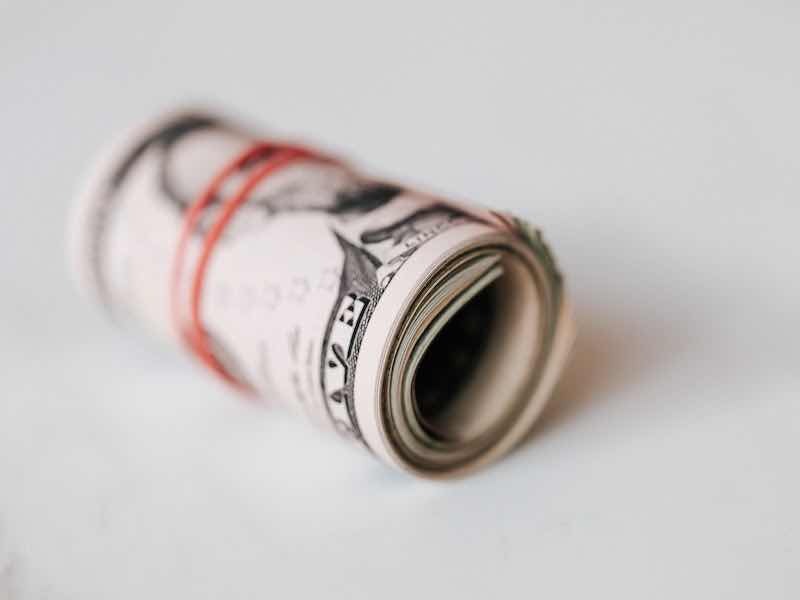Changing to a new product cleaning process costs time and money.
Do it correctly, and manufacturing becomes more productive – quality improves, customers are happy, the defect rate decreases, and the company makes more money. Failure to consider the scope of the effort and process change is likely to be a frustrating, costly exercise in futility.
 Barbara and
Barbara and
Ed KanegsbergWe use degreasing with a classic chlorinated or brominated solvent as the baseline. This example is pertinent because trichloroethylene, perchloroethylene, methylene chloride, and n-propyl bromide are likely to be heavily regulated by the EPA under Amended TSCA.
Changing the product cleaning process requires thought, planning, and action. Even under ideal conditions, where there are no mistakes and the correct process is selected right away, non-capital costs are significant. In this article, we estimate non-capital costs involved in changing a high-precision product cleaning. Even under ideal conditions, these non-capital costs are significant. Avoid process change “sticker shock,” get to the root causes (there may be several!) of why new cleaning processes may be needed, and achieve successful, critical product cleaning.
Process Development
Successful process change involves more than the costs of equipment and cleaning agents. We are using as an example a situation where the manufacturer is cleaning a product requiring “high precision” cleaning.
The current cleaning method uses an open-top vapor degreaser. High precision means that the product is used in situations with defined, exacting cleanliness requirements. A significant level of cleanliness testing, cleanliness verification, and customer buy-in is needed, although not as much testing as would be needed for what we think of as safety/critical cleaning. Safety/critical cleaning includes products like artificial hips and aircraft landing gear situations where the consequences of incorrect cleaning are dire.
We’ll expand the discussion of categories of cleaning in an upcoming article.
Optimistic, Ideal Process Change
The table below outlines the tasks of an “ideal development scenario” to ease into the sticker shock of process change. In the development cost scenario, we’re not considering the capital cost of cleaning equipment, just the costs of understanding appropriate cleaning systems, testing, and decision-making. We use burdened labor rates for engineering and technician staff. In this ideal scenario, the manufacturer understands all of the regulatory, safety, and permitting issues.
The manufacturer understands the soils, soil residue, and cleaning processes used by upstream parts suppliers, and the suppliers are required to use a particular cleaning process. The manufacturer understands how clean is clean enough. The customer has realistic, well-defined, and specific expectations for cleanliness and surface quality. And the customer communicates those expectations clearly. Successful manufacturers have a process change team, a team where the members actually communicate (gulp!) with each other and coordinate their activities (gasp!).
An effective process team includes key people, including a team leader, upper management, design engineers, facilities/maintenance people, safety/regulatory experts, and people involved in quality inspection and cleanliness testing. That is a tall order!
The ideal development scenario is predicated on moving to either modified alcohol or an isoparaffinic blend. Either must be used in an airless system, one designed to use low-flashpoint solvents and to minimize worker exposure and environmental impact. This means that early on in the process of process development, the team makes the correct decisions about the cleaning machine and the cleaning process – correct for your product line, workflow, and product performance/customer requirements.
Ideal Development Scenario: Cleaning of High Precision Product $95,900
| Item | Labor hours | Cost USD$ | Personnel |
| Assemble cleaning team | 8 | 1000 | engineer |
| Team meetings | 8 | 5200 | 6 people: 4 Sr engineer. 2 technician |
| Meet with advisors | 8 | 3000 | engineer+ advisor |
| Meetings with customers | 8 | 1000 | engineer virtual |
| Audit suppliers | 80 | 17500 | engineer (2 day each including travel x 5) |
| Explore cleaning options (web-search talk to vendors webinars etc.) | 60 | 7500 | engineer |
| Attend trade shows | 32 | 7000 | engineer |
| Obtain and review preliminary equipment costs | 20 | 2500 | engineer |
| Select obtain and ship representative hardware samples for test at vendor | 60 | 12000 | engineer +technician |
| Meetings with insurance carrier fire department | 4 | 500 | engineer |
| Independent lab cleanliness tests | 4000 | ||
| Evaluate results preliminary cleanliness tests (vendor and independent) | 8 | 1000 | engineer |
| Review findings with upper management | 4 | 500 | engineer + manager |
| Address management concerns | 8 | 1000 | engineer |
| Fine tune equipment and process design | 40 | 8000 | engineer +technician |
| Site visit at equipment vendor | 16 | 3500 | engineer |
| Arrange for needed facilities changes | 4 | 1000 | 2 Engineers |
| Address local regulatory issues | 8 | 1000 | engineer |
| Set up and on-site performance test for new equipment | 60 | 16500 | engineer+ 2 technician |
| Train employees | 8 | 2200 | engineer+ 2 technician |
Very Ideal
Many manufacturers do not consider the non-capital costs of changing the cleaning process; understanding these non-capital costs is essential to avoid mistakes, unnecessary expenditures, aggravation, and generally beating your head against a stone wall. This ideal scenario is the equivalent of a home improvement TV program, one where all of the celebrities of HGTV and Magnolia Network are there to help you avoid any mistakes.
This means that experts in design, permitting, and construction are on speed dial; there are no significant delays; any mistakes are corrected within the timeframe of the show; everything comes through on time and within budget. Oh, and Martha redoes the landscape and shows up with cookies. We took this ideal approach because many manufacturers and many folks at regulatory agencies do not quite realize the full costs and issues involved in process change.
In our experience with actual projects on planet Earth, additional time and costs are needed. For example, it often takes more than 8 hours to assemble a positive, proactive process team. Meetings with customers can be doubled or even tripled, especially if the customer simply spews out “required” but irrational and unachievable specifications. Diplomacy takes time. It may take more than 8 hours to train employees on the use of airless solvent systems, especially if everyone is accustomed to open-top degreasers. A better real-world estimate can easily triple the development cost; it can be significantly greater than the cost of the equipment.
Capital Costs
These process development costs do not include the cleaning equipment. The costs of cleaning equipment, particularly airless contained systems, are significant. In this analysis, we consider medium-sized cleaning systems to have a chamber of approximately 36” x 36” x 22”.
The capital cost of medium-sized cleaning equipment for this process ranges from $250,000- $500,000. By the way, properly designed aqueous cleaning equipment for high-precision cleaning has similar costs. Multi-tank aqueous equipment usually requires more floor space than open-top and airless solvent machines.
Even in an ideal process change scenario, non-capital costs of $96,000 represent a significant portion of the costs of process change.
Why?
Just as there are many reasons for cleaning, there may be several motivations for changing the cleaning process. As we explained in the August 2023 issue of Clean Source, it’s crucial to ask questions to understand all of the motivations for process change.
Why is your company changing the cleaning process? What’s the time frame? What’s the budget for cleaning equipment? What’s the non-capital budget for process change?
There are technical motivations for process change. The process equipment may be forty years old; it may malfunction on a regular basis. Customers for the current product may demand a lower defect rate, fewer particles, or lower non-volatile residue (thin-film residue). R&D may have a new product, and the current cleaning process simply doesn’t cut it. There may be upstream issues. The supplier may change to use a less effective cleaning process, or there may be a supply chain bottleneck.
There are lots of regulatory and corporate policy issues. PFAS are being regulated/restricted by a patchwork of state regulations. Chlorinated and brominated cleaning agents are being restricted, and there may be usage bans as a result of developing and proposed regulations by the U.S. EPA amended TSCA. Aqueous formulations may be changed in response to restrictions by regulators. Business decisions on the part of your chemical and cleaning chemistry suppliers may limit cleaning agent availability.
For example, partially in response to concerns about PFAS, 3M is stopping production of the Novec chemicals that are used to suppress the flashpoint of trans-DCE. There are chemical shortages; for example, one major supplier of TCE has exited the U.S. market. Company/corporate policy may restrict cleaning agents or cleaning processes. For example, in response to concerns about employee safety, corporations may insist on moving from an alkaline cleaner to one with a near-neutral pH. Corporate may ban the use of chlorinated or brominated solvents.
Shortcuts Cost Money
Some manufacturers succumb to the temptation to shortcut process development. Others may ignore process development and simply select cleaning agents and cleaning equipment based on specs and vendor claims and promises.
In a subsequent article, we will outline tempting but unwise shortcuts, the consequences of choosing the wrong cleaning process for the application, and the very significant costs of mistakes. Spoiler alert: chaos ensues!
Barbara and Ed Kanegsberg founded BFK Solutions in 1994 as a critical cleaning consulting service and the go-to resource to make cleaning, surface quality, and contamination problems go away or — even better — to avoid problems in the first place. Barbara, widely known as “The Cleaning Lady,” is an expert and trusted adviser in critical cleaning. Ed is known as “The Rocket Scientist,” and they write Clean Source, an approximately monthly e-newsletter that provides practical ideas to improve cleaning, contamination control, and product quality. They are co-editors of and contributors to the acclaimed two-volume “Handbook for Critical Cleaning,” CRC/Taylor & Francis, 2011. Visit https://bfksolutions.com
References:
- B. Kanegsberg and E. Kanegsberg, “What Could Possibly Go Wrong? The Process of Process Change,” presented at Surface Finishers Educational Association (SFEA), November 11, 2021. https://www.youtube.com/watch?v=m1Pp06grbvk&t=36s
- D. Williams, B. Kanegsberg and E. Kanegsberg, “Cleaning with Organic Solvents, Part 2:Iso-paraffins and Modified Alcohols”, Clean Source, April 2023. https://bfksolutions.com/cleaning-with-organic-solvents-part-2-iso-paraffins-and-modified-alcohols/
- B. Kanegsberg and E. Kanegsberg, “Interesting Times for Manufacturers,” Clean Source, January 2023, https://bfksolutions.com/interesting-times-for-manufacturers/



































